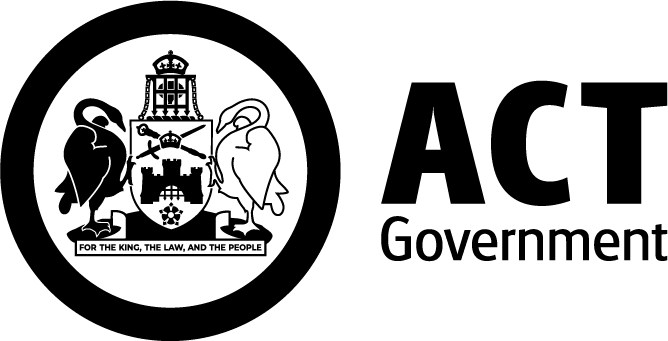On this page

Project overview
Light Rail Stage 2B: Commonwealth Park to Woden (Stage 2B) would extend Canberra’s light rail network to complete a north-south public transport link from Gungahlin, through the City centre and on to Woden.
Extending light rail further south would give more people more transport options, help reduce traffic congestion and support Canberra’s transition to a zero emissions future.
It aligns with planning work that has commenced on the Southern Gateway Corridor.
The development of the Southern Gateway Planning and Design Framework (the framework) will establish an integrated land-use and transport plan for the extension of Canberra’s mass-transit light rail line to Woden.
More housing, commercial activity, active travel and public transport connections as well as improvements to landscape, streets and public spaces are all being considered as part of the framework.
Stage 2B would deliver nine new stops between Commonwealth Park and Woden. Light rail vehicles will cross Lake Burley Griffin via a new bridge constructed between the existing Commonwealth Avenue bridges, travel through the National Triangle, and along Adelaide Avenue and Yarra Glen.
Light rail, as part of an integrated active travel network, would better connect Canberra’s north and south to meet the growing population’s future transport needs.

Planning and approvals
Design, planning and approvals work on Stage 2B is progressing.
Careful and considerate planning will help preserve the National Triangle’s cultural and heritage significance, maintain the well-known vistas that Canberra is known for, and ensure Canberran’s have access to a reliable and convenient transport option.
This complex project requires several Australian and ACT government environmental and planning approvals, including:
- Approval under the Environment Protection and Biodiversity Conservation Act 1999 (Cth) (EPBC Act) for the whole project, because of potential impacts to significantly affect matters of national environmental significance protected under that Act
- Development approval under the Planning Act 2023 (ACT) (Planning Act) for works on Territory land
- Works Approval under the Planning and Land Management Act 1988 (Cth) (PaLM Act) for works in Designated Areas
- Approval under the Parliament Act 1974 (Cth) (Parliament Act) from both Houses of the Commonwealth Parliament for those parts of the Project within the Parliamentary Zone.
Environmental Impact Statement
An Environmental Impact Statement (EIS) has been prepared as a requirement of the assessment and approvals processes under the EPBC Act and the Planning Act. It provides an environmental assessment of the Project and seeks to comply with various legislative requirements.
In 2025, Infrastructure Canberra submitted a draft Environmental Impact Statement (EIS) to both the Australian and ACT governments for approval. The draft EIS was on exhibition for 45 business days between 7 July 2025 and 5 September 2025. Submissions will be used to inform revisions to the draft EIS, where appropriate.
Infrastructure Canberra is considering all submissions and will publish a submissions report alongside the revised, final EIS for consideration by both the Department of Climate Change, Energy, the Environment and Water (DCCEEW) and the Territory Planning Authority (TPA).
The final EIS will include a report that outlines:
- the submissions and representations
- the issues raised
- a response to the issues
- key project amendments made to the Draft EIS in response to submissions.
The final EIS will be lodged again to DCCEEW and TPA for consideration and approval. This process will determine if the project can proceed and if so, under what conditions.
The final EIS will be made publicly available, and Infrastructure Canberra will notify those who made submissions. At the time of submission, community members were provided with a submission ID which can be used to find the response to their submission in the report.
If the EIS is accepted under the Planning Act 2023 and approved with conditions under the EPBC Act, the project will progress a Development Application to the Territory Planning Authority, and a Works Approval submission to the National Capital Authority.
Visit the digital EIS platform to read the draft EIS or explore the interactive EIS map.

Alignment
The ACT Government’s preferred alignment is to take light rail past Parliament House via State Circle East. An alternate alignment through National Triangle and Barton has been studied to ensure the project can be flexible and responsive as planning work progresses. Different alignment and stop options deliver different opportunities in accessing employment and cultural institutions, place enhancement and urban renewal. Similarly, they each present different challenges in approvals processes, technical considerations, design, and construction. The final, revised EIS will include only one alignment.

Community and stakeholder input
In 2025, Infrastructure Canberra submitted a draft Environmental Impact Statement (EIS) to both the Australian and ACT governments for approval. The draft EIS was on exhibition for 45 business days between 7 July 2025 and 5 September 2025.
Previous consultation
Focussed community consultation ran from 7 May to 30 June 2024 as part of the development of the Environmental Impact Statement (EIS). Community members completed surveys which provided a better understanding of:
- what they value about their precinct
- what they considered important for design principles and the project
- what they viewed to be the most important potential benefits and impacts during construction and operation.
Views captured through community engagement were used to inform the EIS and draft Concept Design.
Read the summary of consultation outcomes in the listening report.
Find out how to join the conversation.
Subscribe for updates to stay informed.
